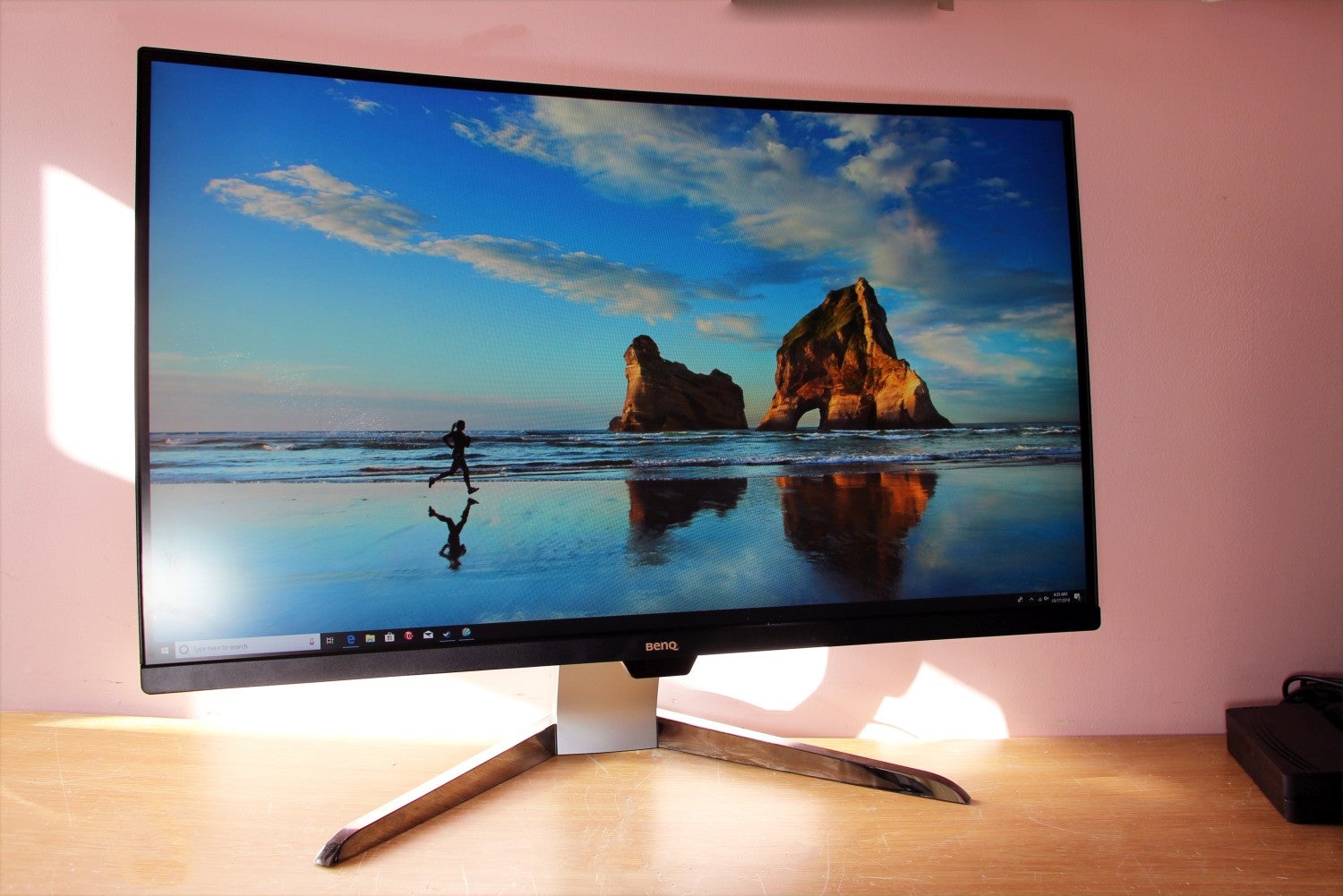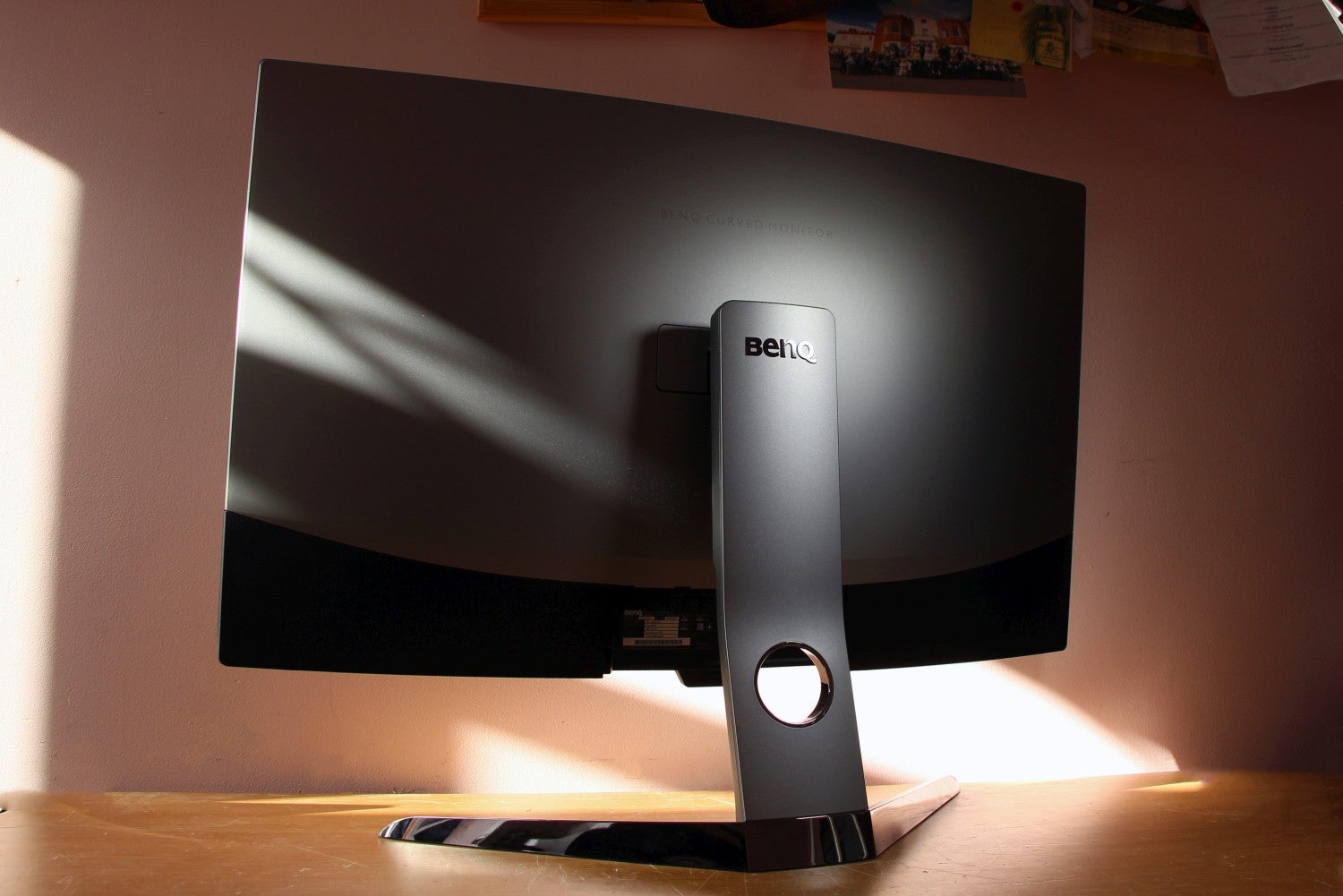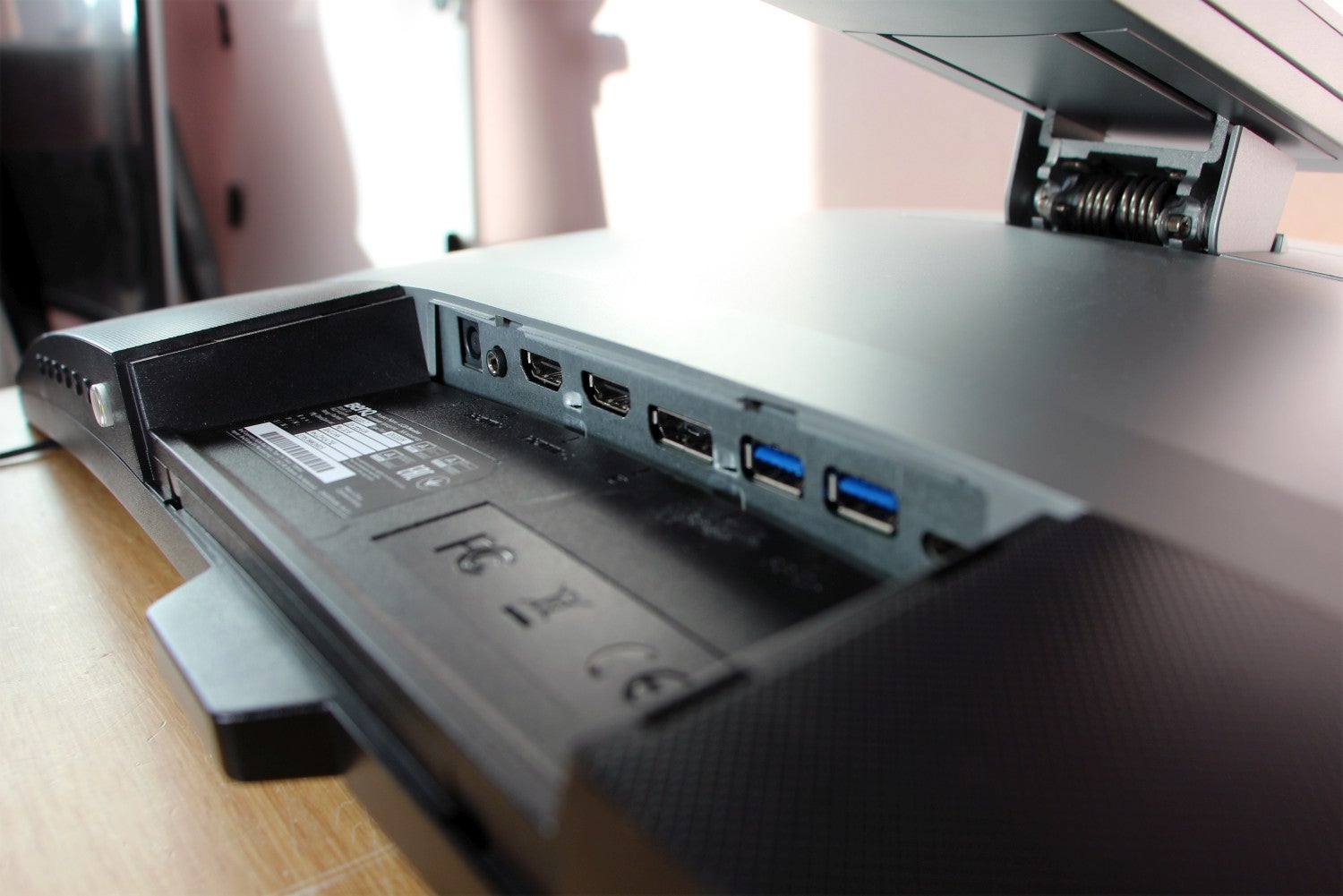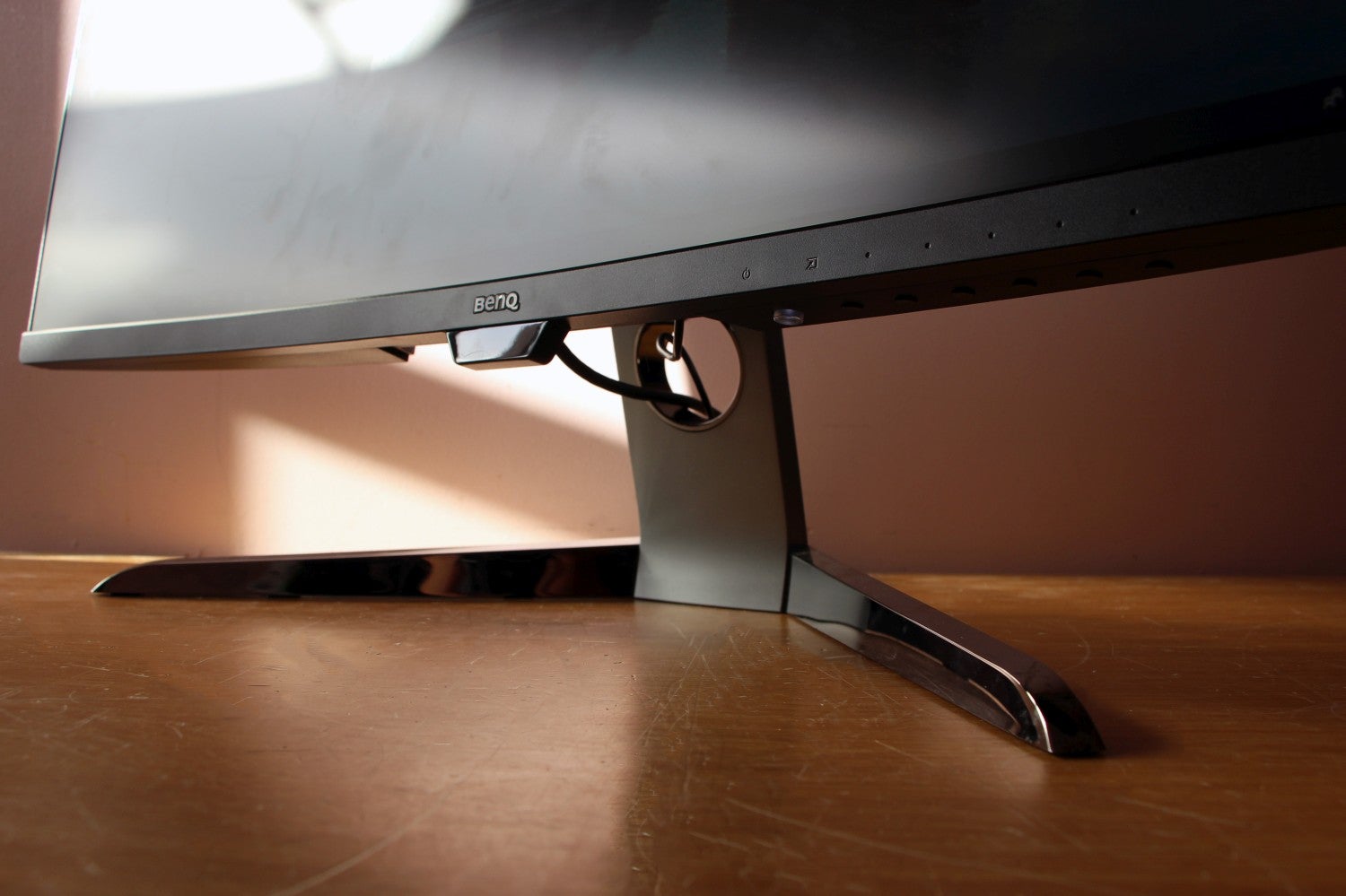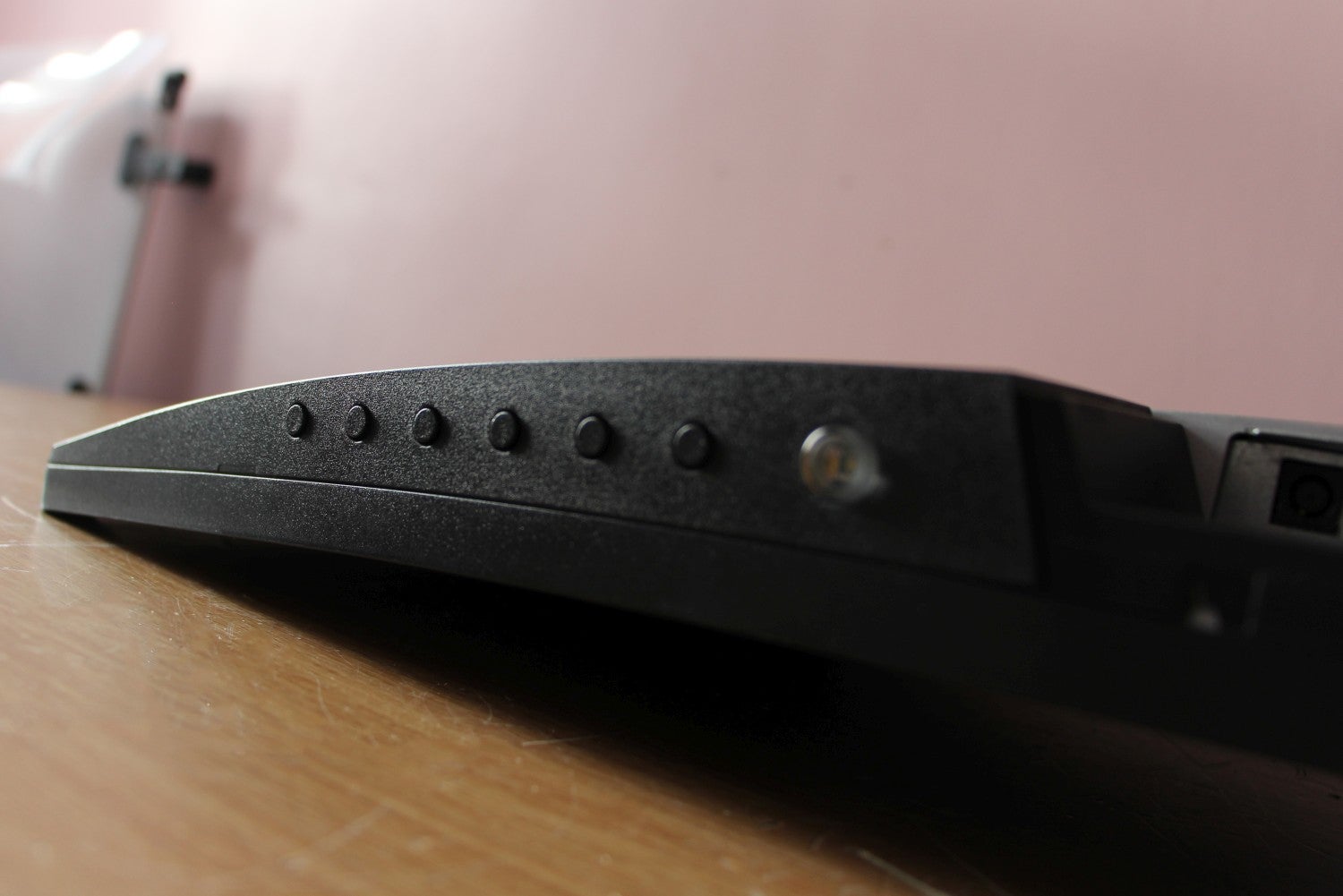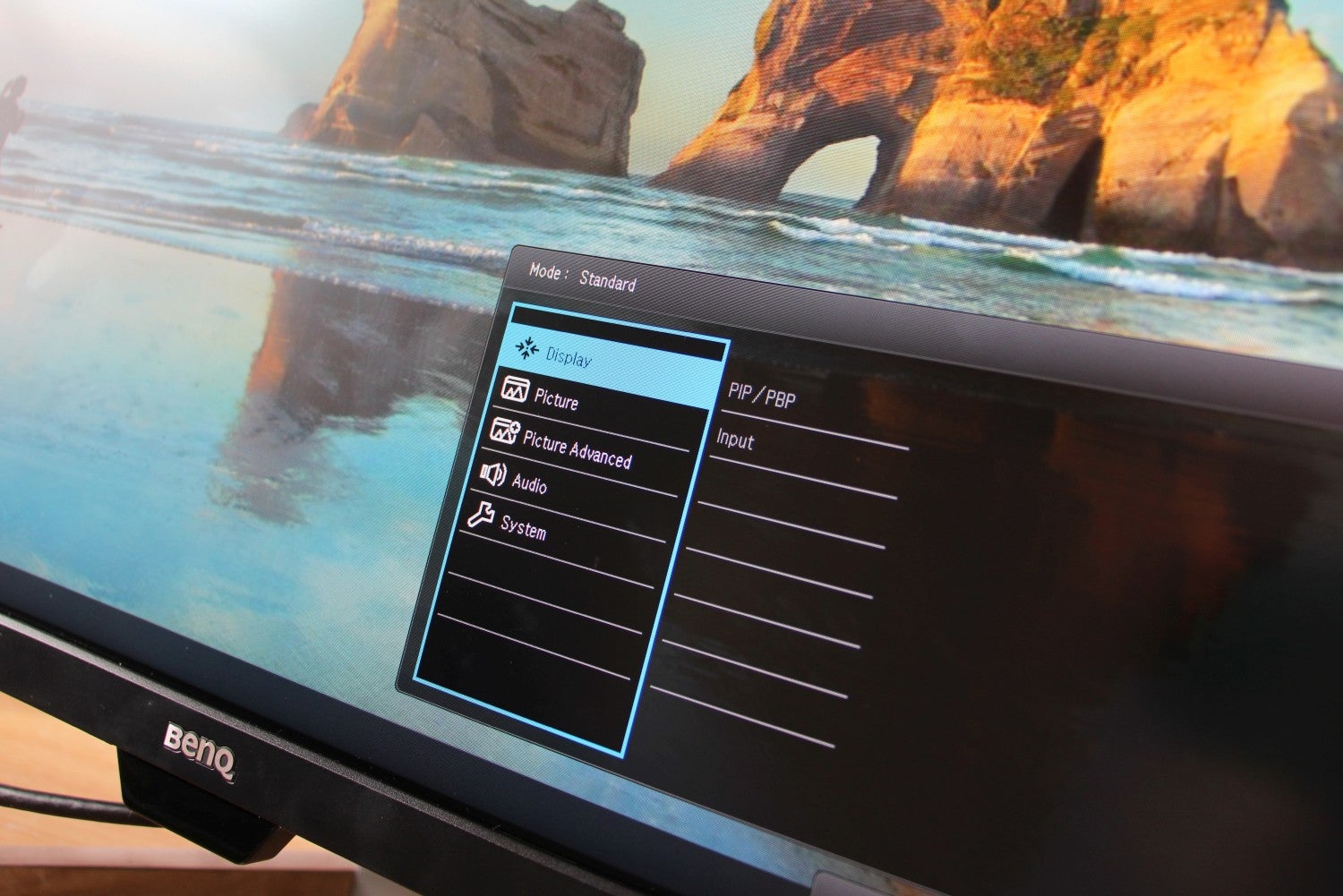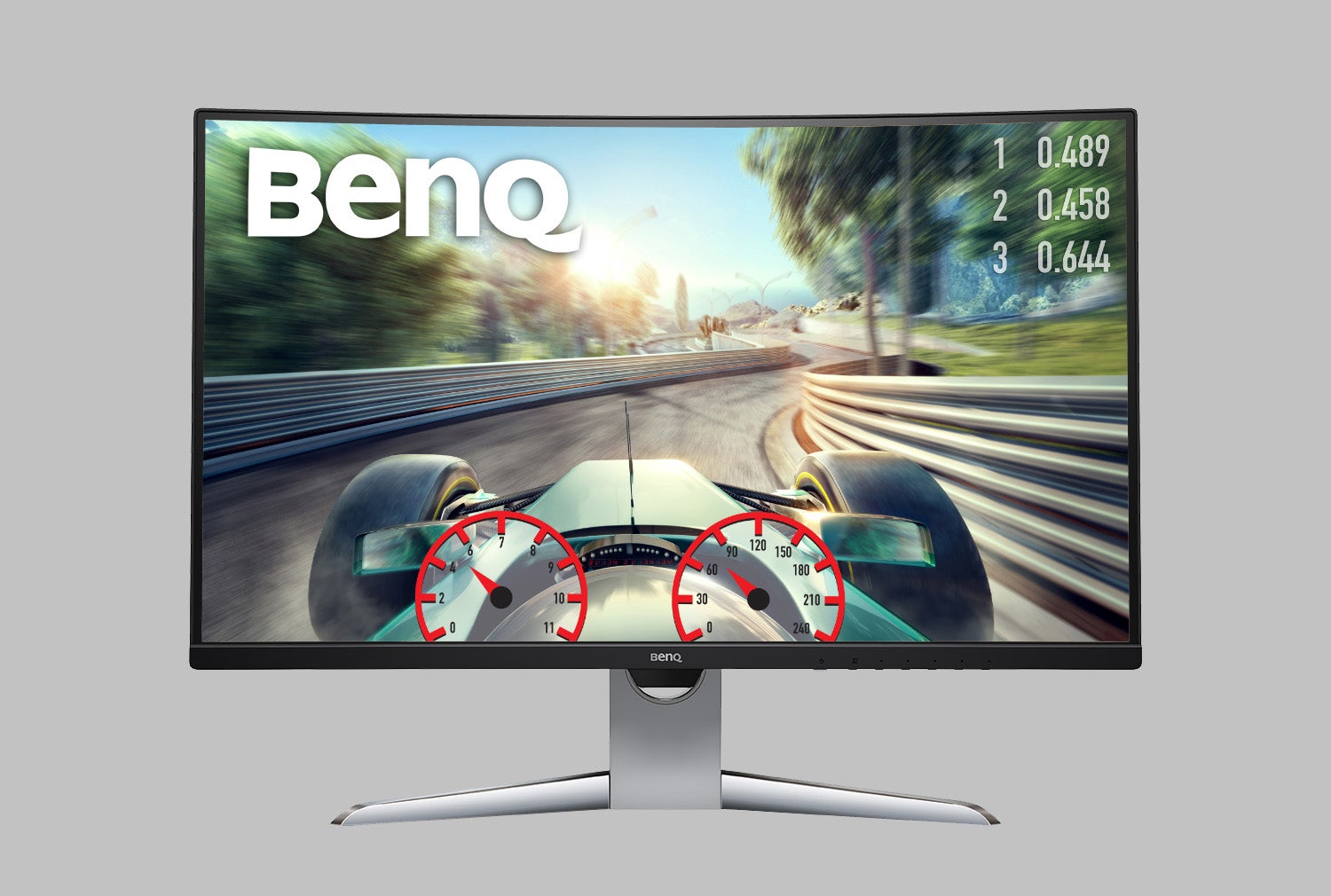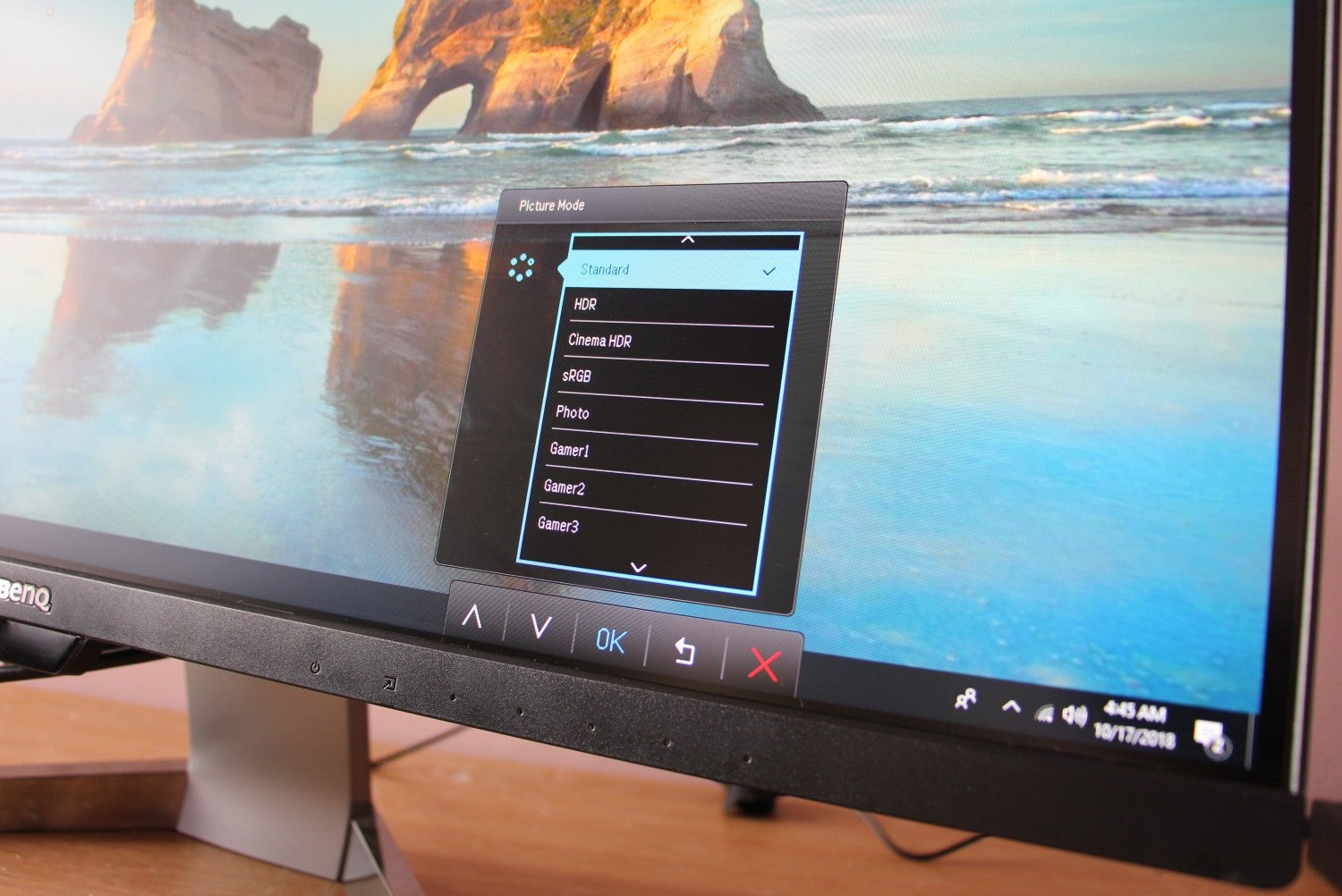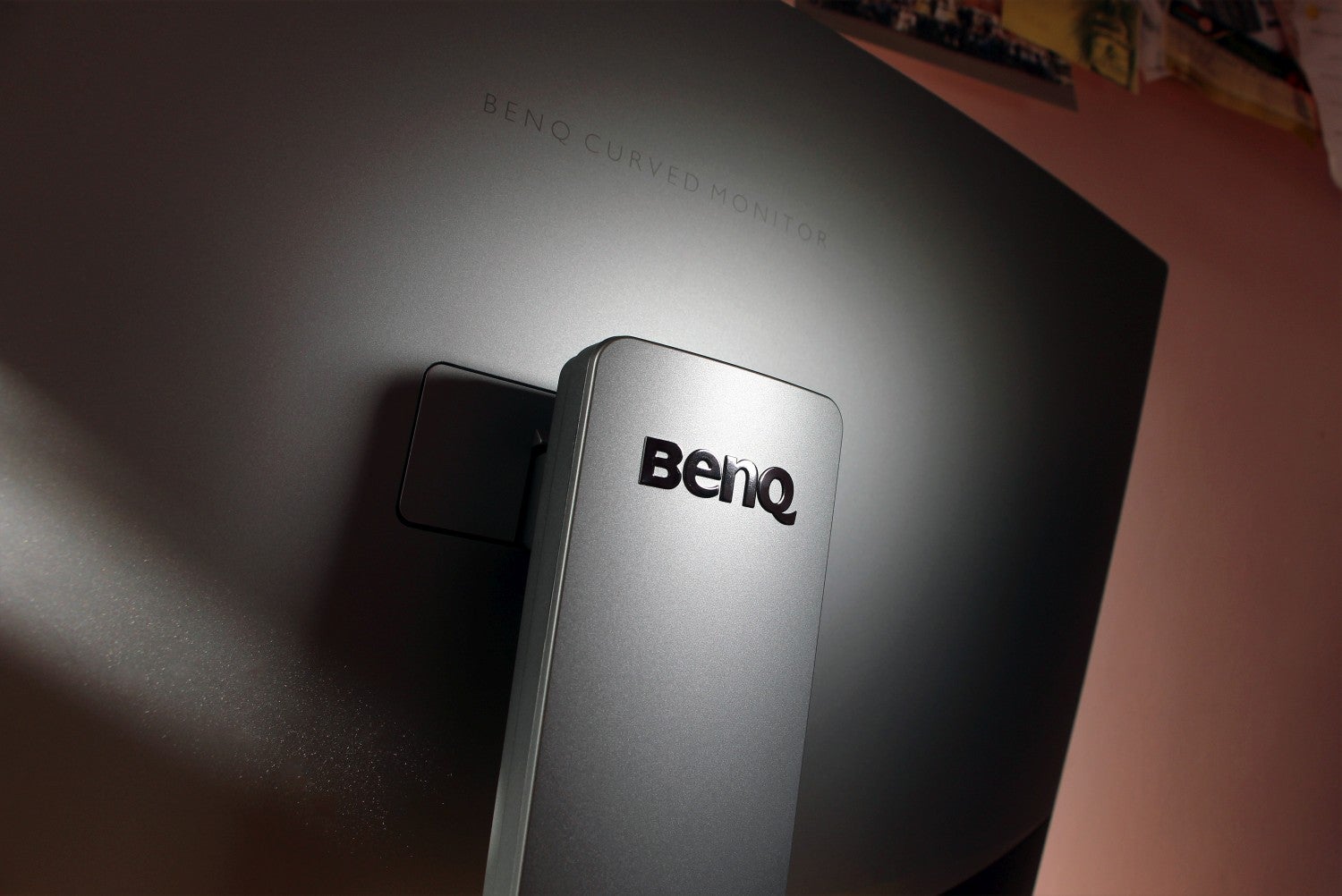BenQ EX3203R Review
BenQ EX3203R Review
The BenQ EX3203R has HDR, FreeSync and a curve. Can this gaming screen do it all?
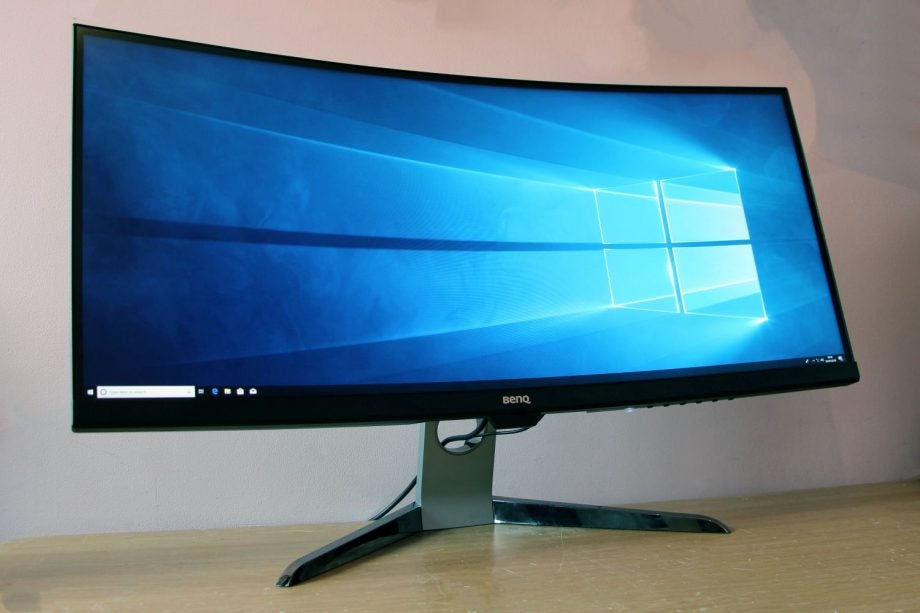
Verdict
The BenQ EX3203R's HDR has limited impact, but this screen fights back with consistent excellence elsewhere
Pros
- Excellent contrast and black levels
- Mature design
- Plenty of features
- HDR support
Cons
- Minimal HDR impact
- Middling colour quality
- A little expensive
Key Specifications
- Review Price: £469
- 2560 x 1440 resolution
- 3000:1 contrast
- 4ms response time
- 32-in screen size
- VA panel
- 144Hz refresh rate
- AMD FreeSync
- HDR support
The BenQ EX3203R is the latest monitor that claims to tackle gaming, movies and entertainment with an added dose of HDR – and that headline-grabbing feature is joined by a curved design and AMD FreeSync.
It talks the talk, then, but does it live up to those claims in a market that’s full of manufacturers claiming to offer the same – and is it worth its £469 price tag.
BenQ EX3203R – Design and features
The BenQ is packed with features, but the stand-out addition is HDR – the technology that delivers deeper contrast and punchier colours to make games and films look more vivid.
The HDR included in the BenQ adheres to the VESA DisplayHDR 400 standard. This option does deliver HDR, but it’s also the least demanding type of HDR used commercially right now.
That’s a double-edged sword. While VESA DisplayHDR 400 does therefore bring HDR to a wider range of more affordable screens – the BenQ, for example – its lesser specification means HDR’s impact won’t be as noticeable.
Related: Best gaming monitors
For example: TVs with the best conventional HDR compliance routinely serve up 10,000:1 contrast levels and 1000 nits backlights. However, this isn’t practical for consumer screens, since they can’t deliver these specifications at low cost. As such, VESA DisplayHDR 400 only requires a 400 nits brightness level for a screen to be certified. This will deliver a brightness and contrast that easily beats normal gaming screens, but is unlikely to near 10,000:1. The BenQ, for instance, is rated for 3000:1.
The less-demanding VESA DisplayHDR 400 standard has that lesser brightness demand, and it also doesn’t need any sort of local dimming. It promises to render 90% of the HDR-friendly DCI-P3 colour space, rather than 100%.
You’ll certainly get benefits from the BenQ’s system, but you won’t get HDR’s full impact. And, beyond that, you need to consider the amount of HDR content actually available. A few dozen games support HDR – including Battlefield 1, Fortnite, Hitman and Forza Motorsport 7. Netflix, along with a handful of other streaming services, now offers some titles in HDR.
While the catalogue of HDR content is growing, it’s still very much tomorrow’s technology. If you need evidence of its lack of development, turn on HDR in Windows 10: it looks downright awful, with washed-out colours – until a game is launched.
Microsoft will undoubtedly improve Windows 10’s native HDR support, and more HDR-supported games, movies and services will emerge. For now, though, it’s a divided technology: on the one hand there’s a growing amount of content that can be used; but on the other, it’s going to be a long time until it’s a must-have feature.
The BenQ’s biggest rival finds itself in the same boat. The ViewSonic XG3240C adheres to the same HDR standard, so it can display HDR content but with a subtler boost than full HDR offers.
Elsewhere, the BenQ is kitted out with a range of features that are game-friendly – and more immediately useful than HDR.
It has 144Hz AMD FreeSync, which means the screen can synchronise its refresh rate to the graphics card’s output at a peak frame rate of 144fps. That’s great, because it means butter-smooth gaming – important for both single-player titles and frenetic online play.
The BenQ also has the second generation of AMD FreeSync, which means HDR support and the ability to more fully render a broader colour gamut.
The use of AMD’s technology does throw up a couple of caveats. You’re only going to use this feature if you have an AMD graphics card. The card will also need to be reasonably powerful to drive a 2560 x 1440 monitor at beyond 100fps. This is because you’ll only get the best results from this screen if you can run it at higher frame rates.
Related: Best AMD Ryzen CPUs
If you have a more popular Nvidia graphics card, you can still run this screen at 144Hz – and so experience smooth gaming. However, you won’t be able to synchronise, and so gameplay won’t be quite as picture-perfect.
It’s the same situation as the ViewSonic, which also has FreeSync that tops out at 144Hz.
The BenQ’s curved panel uses VA technology, which means it will be good with colours and contrast but less impressive with response time. To that end, LG claims a 4ms response time for this screen. That’s fine for most gamers, but esports pros may notice the lack of speed compared to gaming panels that serve up 1ms or 2ms times.
The BenQ pairs its VA technology with a curved design and a 2560 x 1440 native resolution. The curve makes games more immersive – as they are on the ViewSonic – but the resolution is as low as I’d want on a 32in screen. The screen isn’t particularly dense, which means noticeable pixels.
It’s the same issue faced by the ViewSonic, which also topped out at a middling 94ppi. And, to be fair, it isn’t all bad – a 2560 x 1440 resolution is still ample for high-end gaming, plus a 4K screen running at 144Hz would be far too demanding for the vast majority of consumer graphics cards.
Around the rear is a pair of HDMI 2.0 ports and a DisplayPort 1.4 connection. There are two USB 3 ports, and a USB Type-C port that functions as a display output or an upstream connection. You get a headphone jack, but no speakers.
The ViewSonic does have speakers, but no USB Type-C. Elsewhere, the two screens offer identical connectivity options.
The BenQ looks far classier than many offerings in this area of the market. It has slim bezels on three sides and a larger bottom bezel with a discreet logo. The rear has a silver-effect finish, and the stand is smart and subtle, with a large cable-routing cutout. The slim, chrome-effect legs offer a solid base, and the entire unit is sturdy.
The BenQ looks more mature than the ViewSonic, which opted for the usual gaming look of plenty of glossy black plastic.
BenQ EX3203R – OSD and setup
The BenQ arrives fully assembled, which makes it easy to get started – but it also means you’ll have to contend with a huge box.
This screen is 536mm tall, 713mm wide and 224mm deep when its large, narrow legs are considered, and it weighs 8.1kg. The panel has 60mm of height adjustment and can tilt back and forwards. It can’t swivel from side to side, however, or swing into portrait mode – the usual compromises on large, curved screens.
This screen has an external PSU – which feels extraneous given the screen’s size – and it can’t be wall-mounted without buying an extra kit. Those are irritations, however minor.
The ViewSonic is almost two kilos heavier than the BenQ, but that panel offers greater height adjustment, swivelling options and can be VESA-mounted out of the box.
The BenQ has faults in the practicality department, then, but it looks good and is easy to heave onto a desk. And when it’s in position, the BenQ is easy to use. The OSD is navigated via a row of buttons beneath the bottom-right corner of the panel, and they all correspond to prompts on-screen; you’re unlikely to become confused.
The on-screen display follows the conventional BenQ blueprint. A quick-access menu serves up common screen modes, and the normal menu system is fast and easy to navigate, with sensible options and organisation. It isn’t flashy, but it works well – and better than the ViewSonic’s menu system.
Related: Best PC games 2018
BenQ EX3203R – Image quality
Out of the box, the BenQ delivered reasonable image quality. Its brightness level of 399cd/m2 is superb – virtually level with the 400cd/m2 demanded of the VESA DisplayHDR 400 standard. The black measurement of 0.14cd/m2 is excellent, too.
The measured contrast level of 2850:1 is stonking. It’s far higher than the 1000:1 delivered by conventional monitors, and it means that the screen has enough range to provide a boost when using HDR content.
Those figures compare well to the ViewSonic. That screen offered a middling brightness level of 249cd/m2 and a contrast ratio of 2576:1 – so it couldn’t compare in either regard. That means you’ll get more bang for your HDR buck with the BenQ.
The BenQ does look good when handling HDR content. There’s extra punch with the option activated – dark areas have more depth and colours are more vibrant. However, there’s also no denying that the BenQ’s less-stringent HDR guidelines mean there’s a less obvious gap between this screen and conventional panels. It’s a small improvement, rather than a visual transformation.
Delve into colour accuracy, though, and the BenQ falters. Its average Delta E of 3.32 is fine, but the ViewSonic returned a stunning result of 0.09. And, while the BenQ’s colour temperature of 6054K isn’t bad – colours look only slightly oversaturated – the ViewSonic was spot-on with a 6490K result. Its gamma average of 2.36 is fine, but the ViewSonic hit 2.14.
Those results are still good, and still absolutely fine for gaming and movies. However, they’re not accurate for colour-sensitive photo, video and content work.
The BenQ rendered 98.9% of the sRGB colour gamut, 83.2% of the Adobe RGB gamut and 88.2% of the DCI-P3 gamut. Those figures are all a little lower than those of the ViewSonic, but they’re still great for gaming and for HDR content.
This screen’s uniformity is only middling. It lost 9% of its brightness along the left-hand side, but gained between 2% and 4% on the right-hand edge – meaning an overall swing of between 11% and 13%. It’s a mediocre figure – but, thankfully, not noticeable in day-to-day use.
As usual, the BenQ comes with numerous screen modes. It has an HDR option, but with it engaged the BenQ’s Delta E slipped to 4.88 and its other results remained static. There’s a Cinema HDR option, too, but that ramped up the colour temperature to 7132K, making it look a little chilly. That’s potentially a bit better for gritty movie-watching, but it isn’t a perfect solution.
The first of the BenQ’s Gamer options is incredibly pallid and washed out due to a colour temperature of 11,276K – to a point that it’s unusable. The second option is washed out with a poor Delta E, while the third is just as poor.
The sRGB screen option, meanwhile, is surprisingly excellent. Its colour temperature of 6596K is spot on and its Delta E of 1.31 superb. No matter the type of content you’re viewing – whether it’s games or movies, with or without HDR– the sRGB mode will deliver the best all-round image quality.
Finally, there’s the BenQ’s average input lag time of 11.7ms. That’s a great result and easily good for every kind of gaming.
Related: Best gaming keyboard 2018
Why buy the BenQ EX3203R?
The BenQ EX3203R is a confounding monitor. While HDR does give supported content extra depth and punch, the half-way house nature of the technology used here means you’ll see only a minor benefit. It isn’t going to be the sort of transformation that HDR delivers on pricier products and on TVs.
The concentration on HDR means the BenQ offers better contrast and brightness than its key rival, and performs fine in benchmarks. However, at factory settings, and, in its better screen, modes the BenQ can’t compete with the ViewSonic XG3240C for pure colour quality – even if the differences won’t be particularly noticeable during gaming.
The BenQ’s good features, great contrast, mature design and solid colour performance give it the edge over the ViewSonic, however. It’s an excellent gaming screen – just don’t expect much from HDR just yet.
Verdict
HDR on the BenQ doesn’t deliver the greatest impact, but there’s plenty else here to like, with decent features, quality and design throughout. As long as you temper your HDR expectations, this large widescreen is a great option for single-screen gaming.


